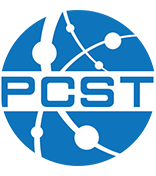Engagement with science and art as a means of social inclusion
Author: Ana Matias – CIMA – Universidade do Algarve, Portugal
Co-authors:
- Andreia Dias – Museu Calouste Gulbenkian, Portugal
- Ana Lúcia Mena – Instituto Gulbenkian de Ciàªncia, Portugal
- Paulo Nuno Vicente – iNOVA Media Lab, Universidade NOVA de Lisboa, Portugal
Social inclusion in science communication is a complex issue. During the past decades, research centres, science centres, museums and other institutions invested in science communication aiming at the promotion of cultural activities to diverse audiences. Despite this investment, science communicators still face a challenge: how to reach citizens that are not interested in science? The main goal for this innovative work was to explore techniques to engage socially-vulnerable communities with science.
The “Embodying Memories” project was developed in a collaborative way between science partners (research institutes), art partners (art museum) and administrative partners (municipality), articulated via a boundary spanner. The target audience, a senior community of women, most illiterate and migrant from Sub-Saharan Africa, was involved since early stages, starting with the topic choice – Memory.
The project implementation consisted of eight sessions over two months in 2018, covering several themes related to memory/brain. Diverse formats were used: from informal scientific presentations in neuroscience (standard in science communication), study cases storytelling (standard engagement technique), community memories sharing (aligned with current dialogue paradigm of science communication), to more interactive activities stimulating body movement, abstraction and self-expression (techniques from engagement with art). Besides in-door sessions, visits to the museum (visual art oriented) and to laboratories (neuroscience oriented) were organized, and a public presentation (empowerment oriented) was performed.
The project was qualitatively evaluated right after implementation, revealing some to moderate changes in awareness and knowledge and in engagement, high changes in attitude and moderate to high changes in social inclusion. Our analysis was based on field notes, attendance record, pre/post focus group, community evaluation and narrative, and public presentation content.
We will present how this project was structured and its outcomes, reflecting on the dynamic equilibrium between science and art education, cultural entertainment and mental health promotion necessary to potentiate social inclusion of this community.
The author has not yet submitted a copy of the full paper.
Presentation type: Individual paper
Theme: Time
